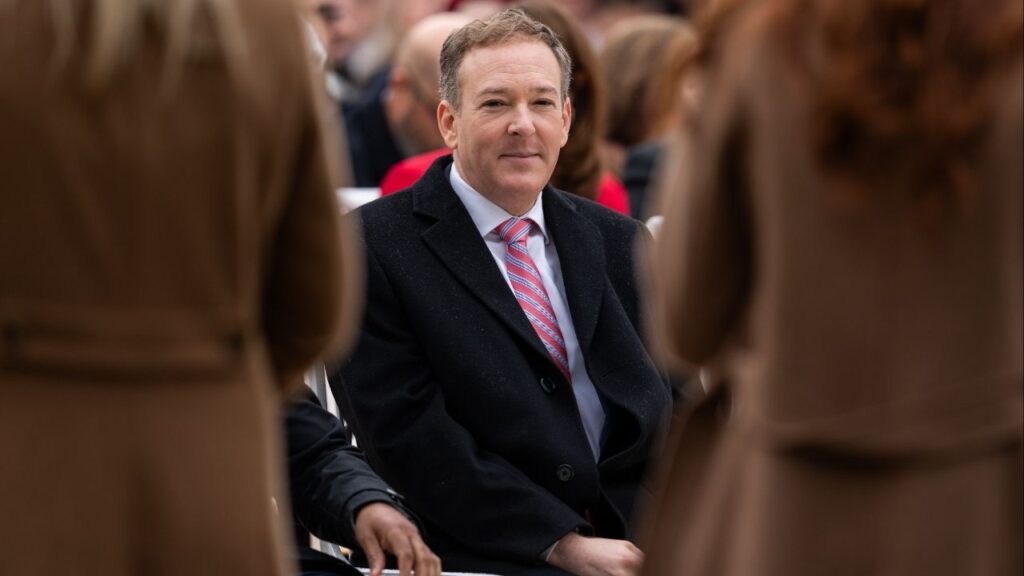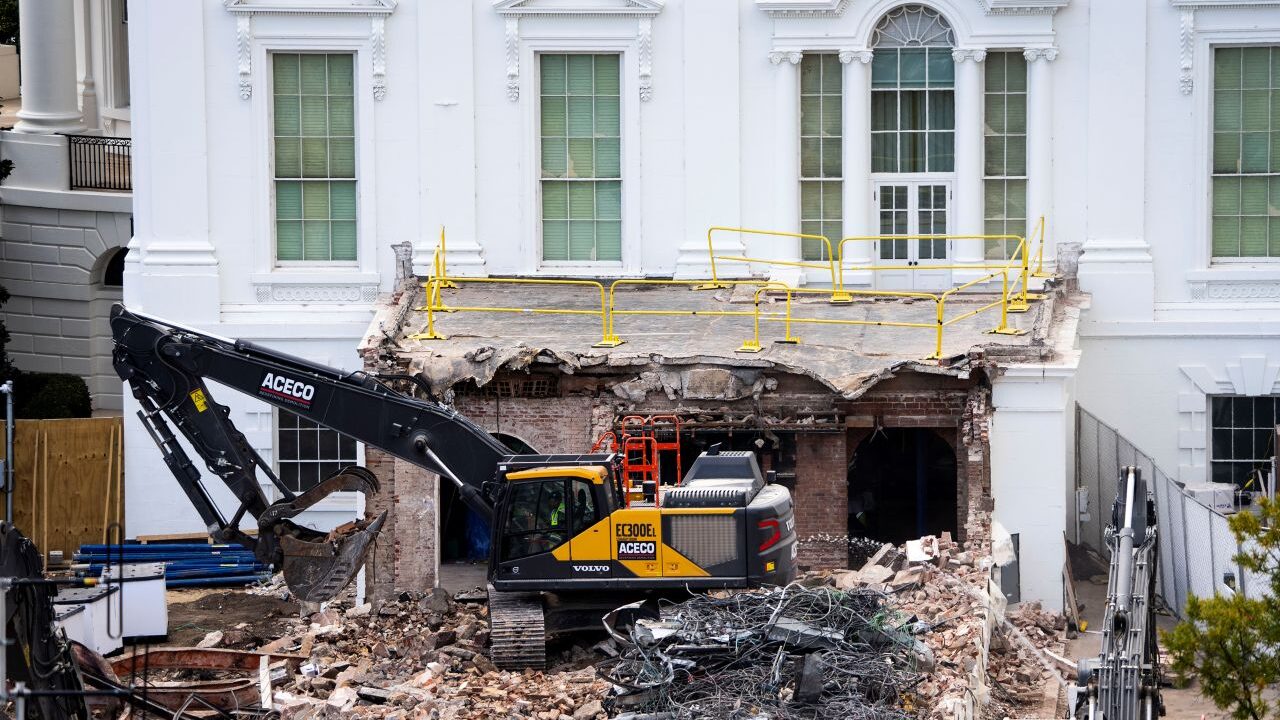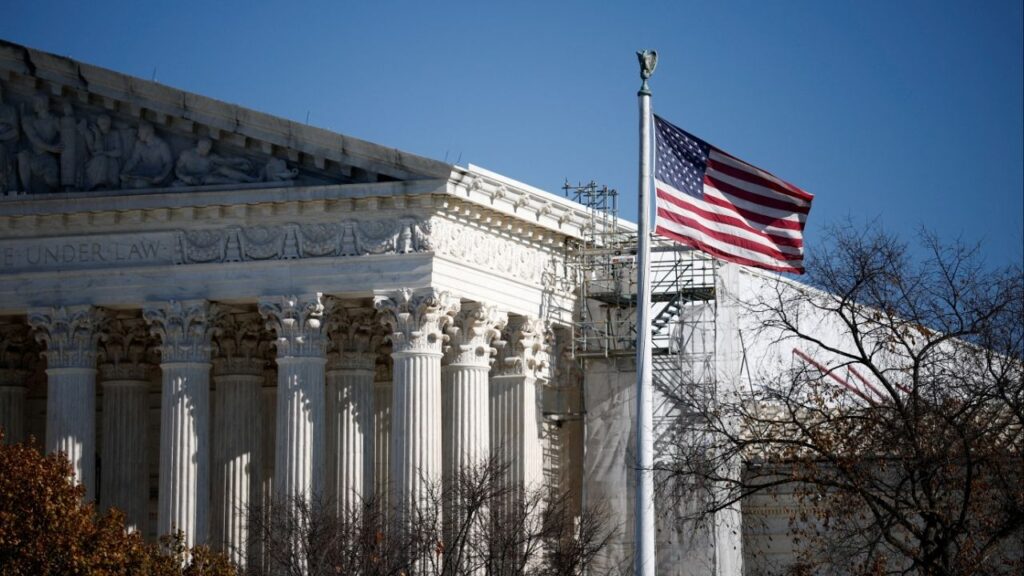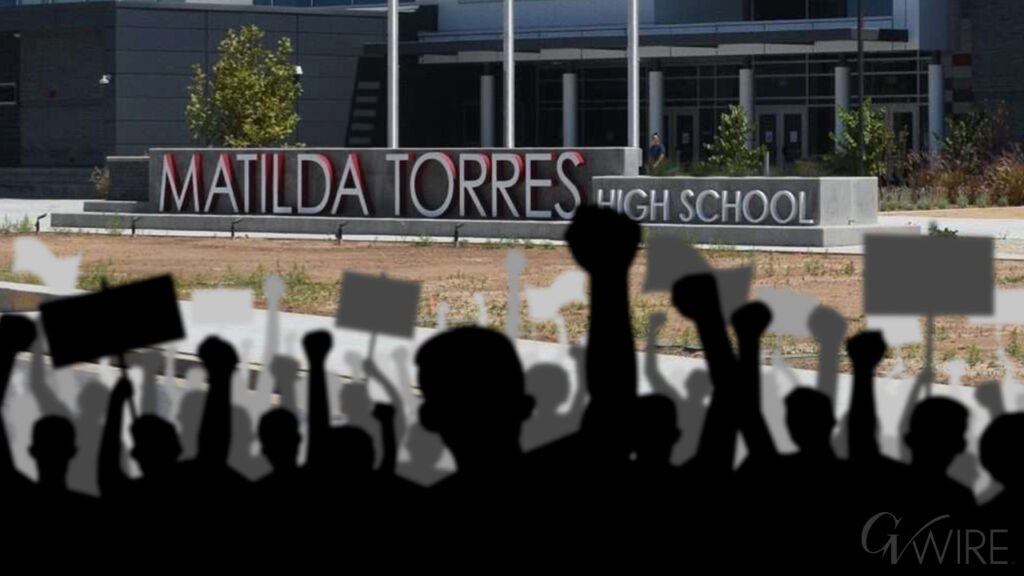
- Progressives and urban institutions are good at protecting architectural beauty where it exists.
- But they're lousy at new development on reasonable timelines and terrible at encouraging loveliness in the developments that do get built.
- Sketches — not social-media caricatures — of Trump's ballroom reflect the character of the White House complex.
Share
|
Getting your Trinity Audio player ready...
|
The controversial public building is ugly and intimidating, architectural vainglory battening on presidential ego, inappropriate to its setting, unmoored from memory and tradition.
I’m talking, naturally, about former President Barack Obama’s unfinished presidential center, currently looming like a Star Wars barracks over the residents of Chicago’s South Side.
Admittedly it’s not the most important architectural controversy involving an American president at the moment. But how you think about President Donald Trump’s demolition of the White House’s East Wing to make way for a large neo-classical ballroom should be connected to how you feel about the Obama megalith and the larger urban-progressive approach to public building.
Trump being Trump, the ballroom project is proceeding without much external consultation and with a whiff of private-donor corruption. But many of the complaints from outraged liberals are more historical and aesthetic, accusing Trump of bulldozing American heritage to build something crass and gaudy in its place.
Development vs. Preservation
And those arguments illustrate a consistent problem with progressive stewardship of American cities, which mixes admirable impulses toward aesthetic preservation with two related failures: a failure to make room for the necessity of substantial development and change and a failure to apply the same aesthetic sensibility to new developments that it applies to older ones.
Put more simply, progressives and urban institutions are good at protecting architectural beauty where it exists, lousy at making sure that new development happens on a reasonable timeline and consistently terrible at encouraging loveliness in the developments that do get built.
The case for Trump’s ballroom is connected to these failures. First, it is simply good to build a White House ballroom, the presidency has needed one for a long time, and it’s absurd that the leader of a superpower has to host state dinners inside temporary tents.
No doubt there was a more careful and sensitive way to pursue the project. But exquisite care and sensitivity are part of the reason that, in so many liberal-leaning jurisdictions, apartment towers, power plants and high-speed rail lines vanish into developmental limbo. It’s just a small example of why Trump’s bull-in-a-china-shop approach appeals; the president’s eagerness to preempt objections and just do something that seems necessary is part of why voters find him attractive.
Trump’s Ballroom Keeps the White House’s Character
This defense of the White House ballroom could be adapted from the school of “abundance” liberalism (associated with my colleague Ezra Klein), with its critique of blue-state inertia. But there is another issue besides bureaucratic sclerosis that makes it hard for left-leaning jurisdictions to overcome opposition to new building: namely, the widely shared awareness that when development happens under progressives auspices, it is often soul-crushingly unattractive.
This is not to say that there exists a major school of bold, beautiful and innovative conservative architecture (the most beautiful cities in America are zones of left-leaning preservation, and right-wing America often prefers the utilitarian and tacky), nor that you should trust Trump in particular to be especially tasteful. I would like to live in a world where American architecture somehow picked up where art nouveau and art deco left off, and the Trump administration’s preference for neo-classical styles feels cautious and derivative even before you get to Trump’s own impulse to put the gilt in Gilded Age.
But gilt can always be stripped off. The general design of the Trump ballroom — if you look at the actual sketches, not the social-media caricatures — is perfectly in keeping with the character of the White House complex, and if there’s any place where a cautious classicalism is appropriate, it’s at 1600 Pennsylvania Ave. So in the end Trump’s architectural legacy will probably be a useful building, built expeditiously, that looks, if not dazzling, at least appropriate, pleasing, fine.
Progressive Urbanism’s Penchant for Ugly Buildings
Whereas the pattern of normal building in our progressive cities, with the careful supervision of planning commissions and the input of bodies that supposedly represent the accumulated wisdom of the architectural profession, regularly produces results that range from the banal and forgettable to the actively offensive. Like the restaurant that disappoints people with terrible food and small portions, our progressive urbanism doesn’t build enough buildings and makes the ones it does build ugly.
Like, say, the new Obama tower. To read about the localist and antigentrification arguments against its construction is to encounter the kind of NIMBY special pleading that so often derails necessary development. But it’s also to encounter an important reason NIMBYism has so many partisans.
It’s not just because of an aversion to crowding or extra foot traffic or rising rents. It’s also because no matter how tight the link between progress and development, it just doesn’t feel like progress to live under a baleful shadow like the one that Obama’s presidential monument will cast.
This article originally appeared in The New York Times.
By Ross Douthat/Doug Mills
c.2025 The New York Times Company
RELATED TOPICS:
Categories

MAHA Activists Urge Trump to Fire His EPA Administrator

Meta Strikes Multiple AI Deals With News Publishers


















